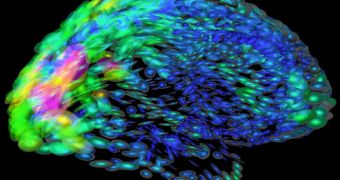Experts at the Massachusetts Institute of Technology (MIT) announce the development of a new class of devices, which are able to reversibly shut down brain activity. This can be done locally, only in the areas where such a measure is needed. The instruments rely solely on the power of light, the team says, as it determined that various colors had the ability to considerably alter the activity patterns of specific nerve cells. The innovation could also lead to the development of new types of therapy for a host of brain disorders, the US National Science Foundation (NSF) believes.
The MIT team argues that most brain disorders, including chronic pain, epilepsy, brain injury and Parkinson's disease, tend to exhibit patterns of abnormal activity inside the brain. The group argues that targeting specific neurons with the new method could result in these patterns being silenced or removed altogether. Other drugs, or existing therapies, are unable to provide healthcare experts with the degree of accuracy they need in order to be able to shut down only specific neural pathways. And this is where the new method comes in, MIT scientists say.
“Silencing different sets of neurons with different colors of light allows us to understand how they work together to implement brain functions. Using these new tools, we can look at two neural pathways and study how they compute together,” the Benesse Career Development Professor in the MIT Media Lab, Edward Boyden, explains. He is also the senior author of a new paper detailing the findings, entitled “High-Performance Genetically-Targetable Optical Neural Silencing by Light-Driven Proton Pumps.” The work appears in the January 7 issue of the renowned scientific journal Nature.
“In this way the brain can be programmed with different colors of light to study and possibly correct the corrupted neural computations that lead to disease,” Boyden Lab postodoctoral associate Brian Chow, also a coauthor of the new investigation, adds. “Multicolor silencing dramatically increases the complexity with which you can study neural circuits. We will use these tools to parse out the neural mechanisms of cognition,” scientist Xue Han, also a postdoctoral researcher and a study coauthor, concludes.
Additional funding for this research was provided by the National Institutes of Health, the McGovern Institute Neurotechnology Program at MIT, the Department of Defense, the National Alliance for Research on Schizophrenia and Depression, the Alfred P. Sloan Foundation, Jerry and Marge Burnett, the Society for Neuroscience, the MIT Media Lab, the Benesse Foundation, the Wallace H. Coulter Foundation, and the Helen Hay Whitney Foundation.

 14 DAY TRIAL //
14 DAY TRIAL //